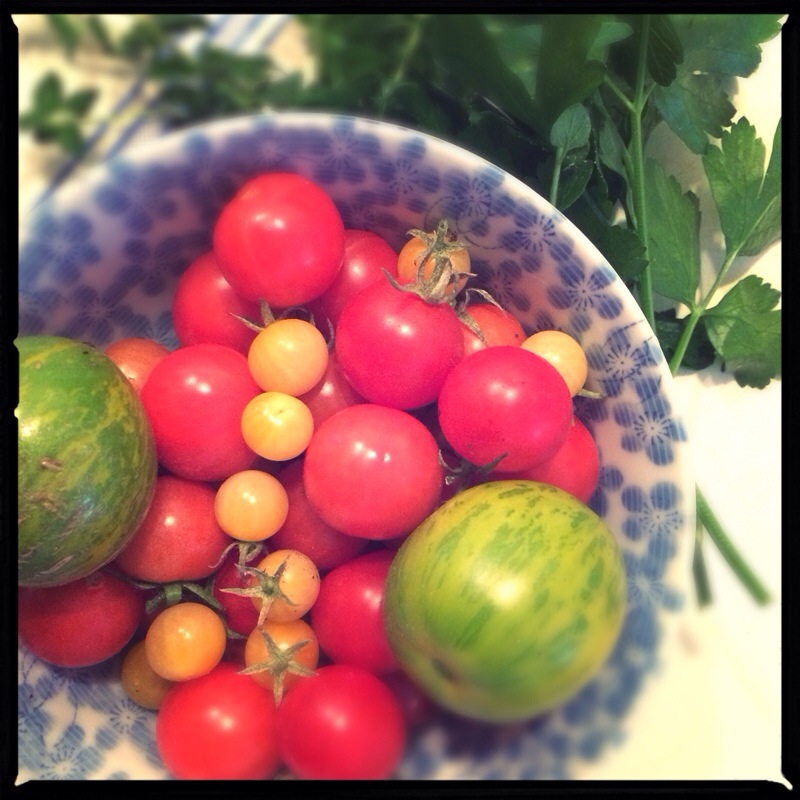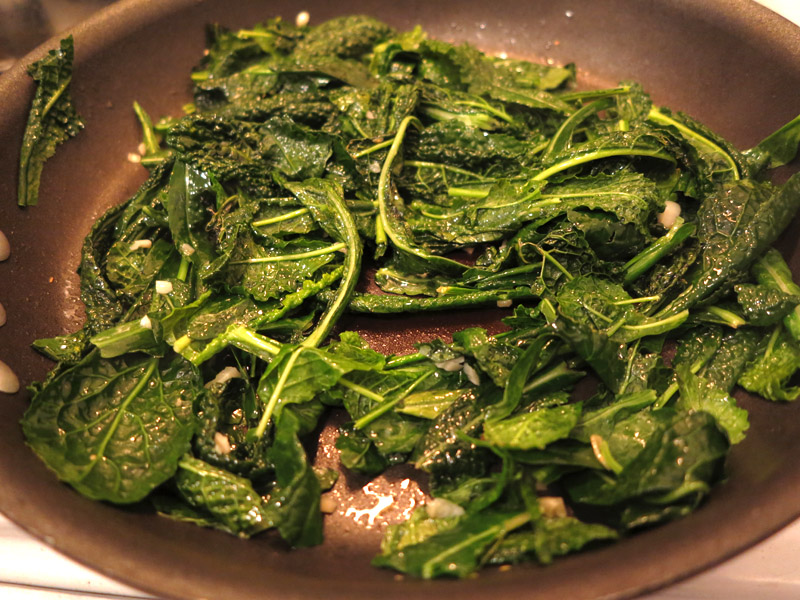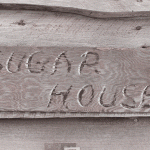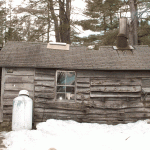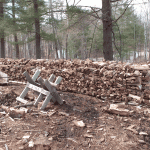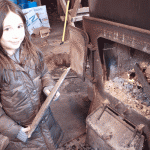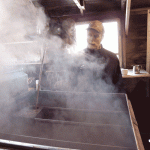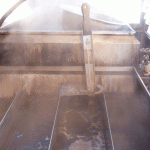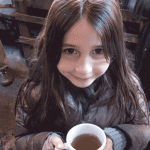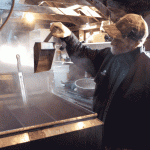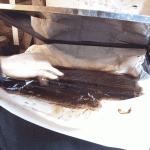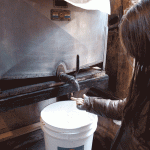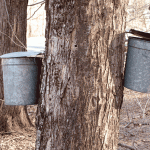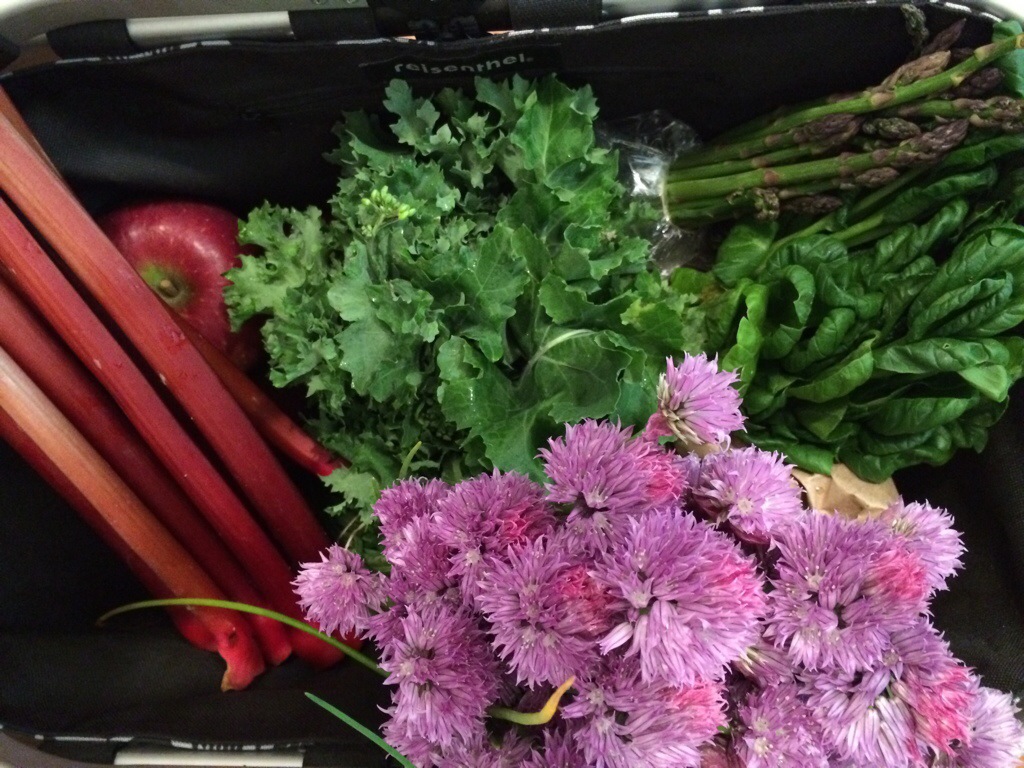
So excited!! Our weekly fruit and veggie share began today. After getting apologetic notes from both of our farmers about the rough winter, I wasn’t expecting much. It was a pleasant surprise to get such bounty. Rhubarb, apples, asparagus, flowering chives, tatsoi, dried black beans and kale rabe and Jerusalem artichokes. Time for more creative cooking!
Category Archives: Local Food
Summer
Garden Kale
I think that this post should be called The Lazy Gardener Gets the Kale.
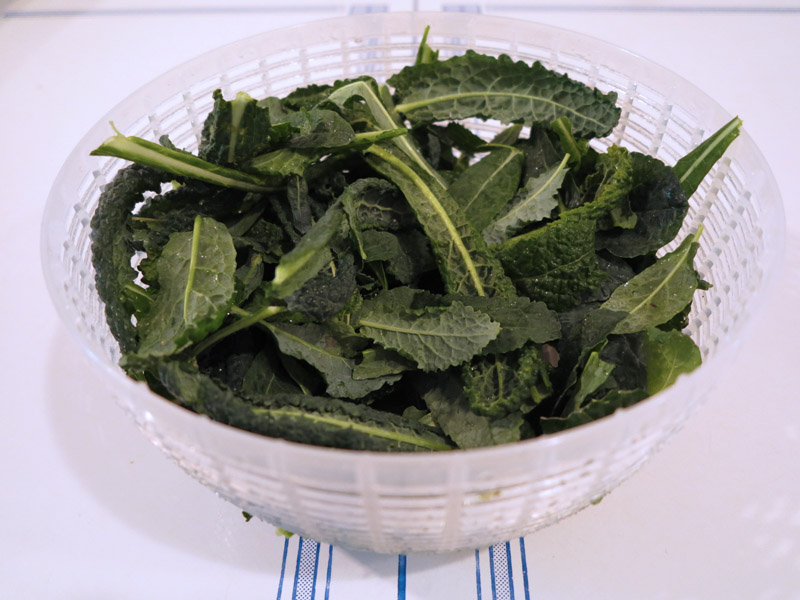 So for some unknown reason, I didn’t harvest my kale last fall. Don’t ask me why because I don’t have a valid reason. Or any reason for that matter. So I guess the glaring answer is laziness…
So for some unknown reason, I didn’t harvest my kale last fall. Don’t ask me why because I don’t have a valid reason. Or any reason for that matter. So I guess the glaring answer is laziness…
Anyhow, we had such a mild winter that the kale survived. I didn’t even have to cover it. Again with the laziness. Sheesh!
I’ve been planting away this spring and decided to finally pull up the spindly looking kale and actually eat it. It’s Tuscan kale, or lacinato kale, which is very tender. And just to keep the whole lazy streak going, I did the simplest (and very delicious) preparation, which is to sauté it in olive oil with garlic. It was worth the wait!
My Mother’s Day
Sunday was a beautiful Mother’s Day. I woke up to bacon pancakes and this beautiful card from Lindsay.
After breakfast, Lindsay and I went into Manhattan to take a sewing class at City Quilter on how to make stuffies. We were asked to bring a couple of drawings, which we would then turn into stuffed felt creatures.
Lindsay made these two drawings:
After a few hours, she made them (with very little help from me) into these:
That evening Neil took us out to The Farm on Adderly, which specializes in seasonal, local and wild edibles. It was delicious!
My Apple Harvest
If a reader hadn’t asked, I might have forgotten to post about my little apple tree. In the early spring I posted about trying to pollinate my Sundance apple tree. I pruned branches from another tree and put the branches near my flowering tree in the hopes that the bees would do the cross-pollinating. You can read about the process here. The good news is that it worked and I had 5 apples growing on my tree. I don’t have any experience with dwarf apple trees, so I don’t know if this is a decent number for the first year of fruit. I also wasn’t familiar with this variety of apple, so wasn’t sure how it would look when the fruit was ripe. This apple is one of the 5 from my tree. The fruit is sweet and crisp and delicious. I’ve always dreamed of having a small home orchard, and although 5 apples is a laughably small amount, it is a beginning.
Our First CSA Pick Up

This week was the first week of our CSA or farm share. CSA stands for Community Supported Agriculture. It’s also known as subscription farming.
In the winter, you buy a share of a farm and in return, you get a share of the produce. What’s great for the farmer, is that the payments come all at once (and are predictable), so they can purchase equipment, seeds and supplies for the next growing season. You and the farmer share the risk of a bad year, or the bounty of an excellent growing year.
What I like is that you get to relearn how to eat with the seasons. The beginning of the season has lots of greens. We got lettuce, oregano, leeks, sunchokes, and lots and lots of strawberries. I wish I could describe how aromatic and delicious these strawberries are. Everything is picked when it’s ripe because it doesn’t have to travel thousands of miles. Can you remember the insides of strawberries being red instead of white?
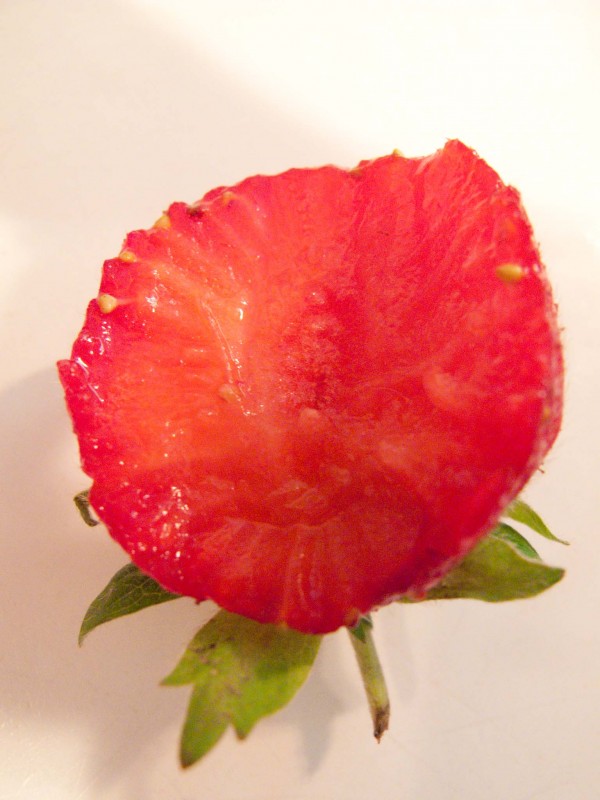
If you live in New York and are interested in participating in a CSA (for next season), click here to find one. We kind of got in through the back door with ours. It has a really long waiting list, but they offer a winter share with frozen fruits and veggies. Somehow participating in the winter share got us in and past the people lined up for just the regular summer share. Shh, don’t tell anyone.
Happy Earth Day
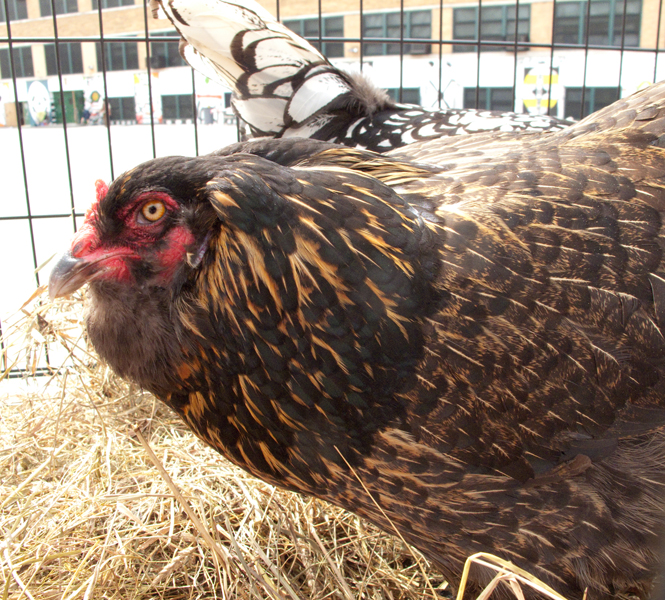
Yesterday I brought our chickens to my daughter’s school for their Earth Day celebration. We were representing backyard chickens. This is one of many school visits we’ve done with them, so they are seasoned pros. We have a dog crate, which is the perfect size for an afternoon. Many factory hens live their entire lives in cages many times smaller than this, but that’s another discussion.
Last year I picked ivy from our garden for the kids to feed them. With the winter being so long, we don’t have ivy leaves yet, so I bought a tub of spinach leaves. The kids had a blast feeding the hens and the piggy little girls wolfed down almost every leaf presented to them.
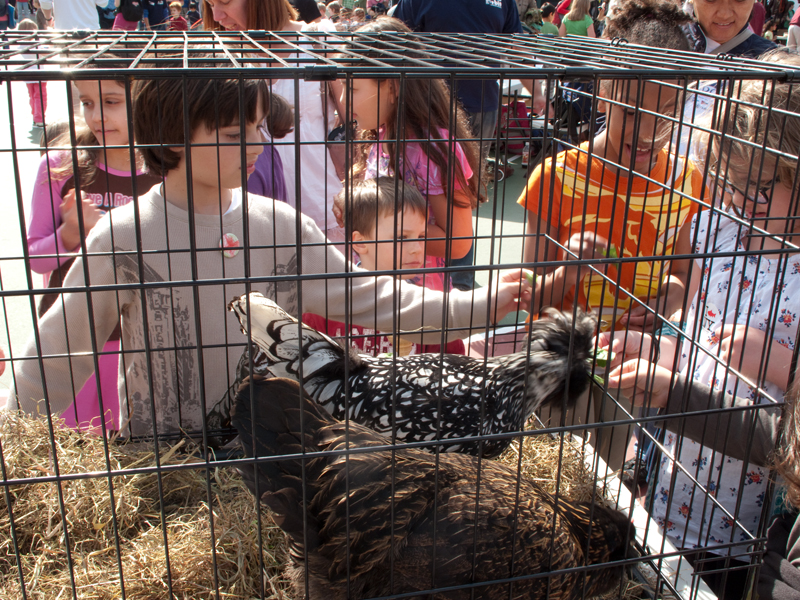
There was another table with worm composting, and towards the end of the day, kids were bringing worms over to feed our girls. They wolfed those down as well, enjoying the change from spinach. They even ate the feed I brought them. It was really kind of amazing how much they ate in those 2 hours.
By 5pm, they were tired and ready to get home. I was afraid Lulu was having a mini nervous breakdown because she was continuously making a noise I had never heard before. Kind of like a donkey bray with a hiccup at the end. But this morning she’s good as new and even laid an egg. It’s probably so rich with beta-carotene from all yesterday’s spinach!
Happy Earth Day to everyone. How are you celebrating?
Maple Sugaring
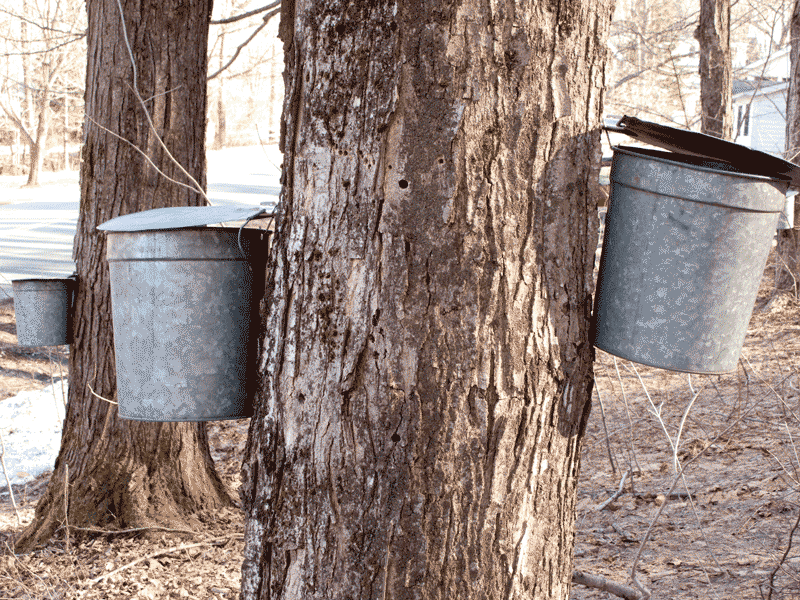
While we were up in the Berkshires, we went to visit Gould Farm to see their maple sugar operation. My in-laws recently met a man named Steve who oversees the maple sugaring there. Gould farm is a pretty amazing place. It is a residential, therapeutic community dedicated to helping adults with mental illness. You can read more about them here.
The evaporator that we saw is powered by a wood fire. From the enormous woodpile behind the sugar shack, it was clear that a lot of wood is needed for the process.
The sap is poured into the far end of the evaporator and works its way through channels. What you can’t see, is that the underside of these channels are shaped a bit like an accordion, so a very large surface area gets heated by the fire. The tree sap ranges from about 2% to 5% sugar and when it’s finished it’s about 67% sugar. We were treated to maple tea, which is the sap that has cooked for quite a bit, but is still in the back half of the evaporator. It is sweet, but still thin like tea. As an extra treat, Steve brought fresh cream from their cows to add to it, which made it taste like ice cream.
There are various ways to know when the maple syrup is finished. You can use a hydrometer, a candy thermometer (it’s ready at about 7 degrees F above the temp of boiling water), or you can do a visual check. The syrup sheets off the ladle in a manner similar to making jam. It is something you can do at home, but we were warned that with the amount of steam that is produced, many homes have lost their wallpaper during the process.
The final syrup was temporarily put in large containers, to be bottled and ready for sale in a couple of weeks. We are definitely going back to get a bottle!
- The sugar house
- Vast amounts of wood needed to make maple syrup
- Stoking the fire
- Steve in front of the evaporator
- The syrup moves through channels
- Drinking maple tea
- Testing the consistency of the syrup
- The syrup goes through a double filter when it’s finished
- Enjoying the syrup, drip by drip
Obama and Slow Food
Here is a clip of Obama answering a question posed by Slow Food USA.
Window Farms
Here’s a short video that shows The Windowfarms Project. I think it’s a great idea, and is especially suited for school classrooms. They have kits especially designed for schools, but the biggest hurdle is funding. A kit for elementary schools sells for just under $300.

